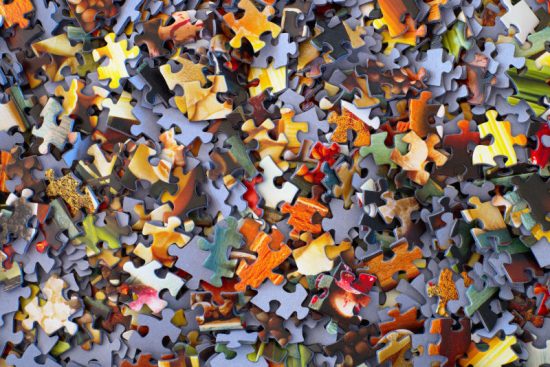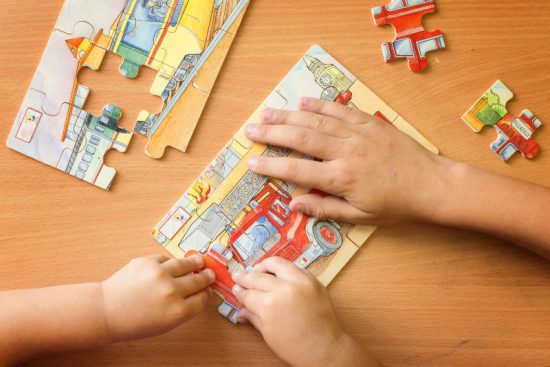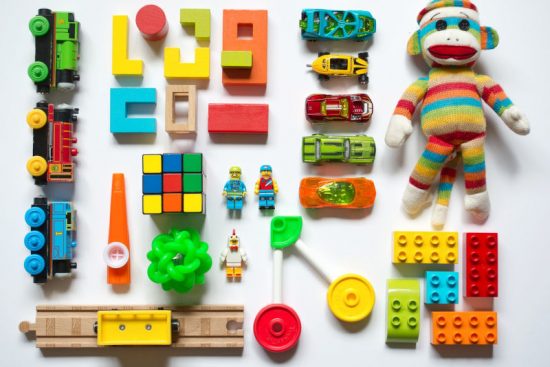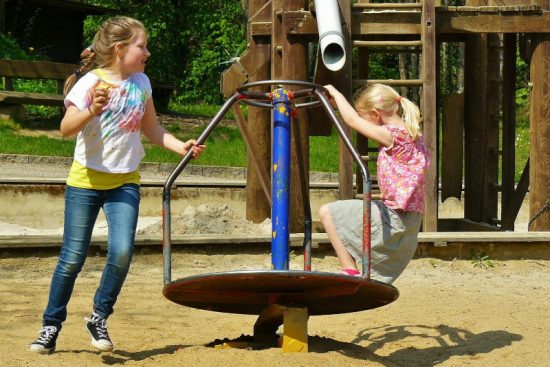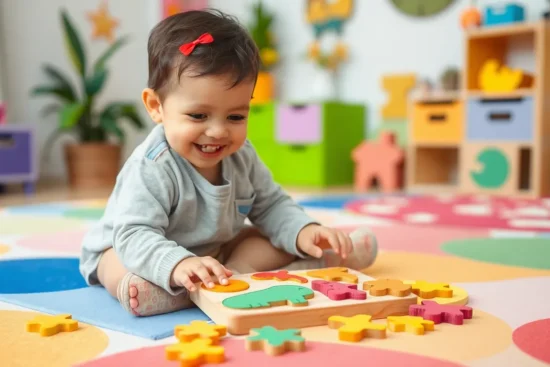
Puzzles for toddlers aren’t just a fun way to pass the time; they’re a gateway to a world of learning and discovery. Imagine a tiny genius in the making, furrowing their brow as they fit colorful pieces together, all while developing essential skills. Who knew that a simple puzzle could turn a living room into a mini think tank?
Puzzle for Toddlers
Puzzles provide numerous advantages for toddlers that extend beyond simple fun. Engaging in puzzle activities promotes essential skills that contribute to a child’s overall growth.
Cognitive Development
Puzzles stimulate cognitive skills by challenging toddlers to think critically. Problem-solving abilities are enhanced as children figure out how pieces fit together. Logical reasoning develops when they identify patterns and sequences within puzzles. Memory plays a crucial role; toddlers recall shapes, colors, and images while assembling pieces. Attention spans improve as children focus on completing a puzzle, fostering sustained concentration. Additionally, spatial awareness benefits from manipulating puzzle pieces, leading to better understanding of how objects interact in space.
Motor Skills Improvement
Motor skills gain significant enhancement through puzzle play. Fine motor development occurs as toddlers grasp and manipulate small pieces. Hand-eye coordination improves when coordinating movements to fit pieces into place. Grip strength increases while children hold and push puzzle components. Such activities also promote dexterity, which is vital for daily tasks. Engaging with puzzles leads to an awareness of body movement, improving balance and control over their actions. These activities form a foundation for future skills such as writing, drawing, and self-care tasks.
Types Of Puzzles For Toddlers
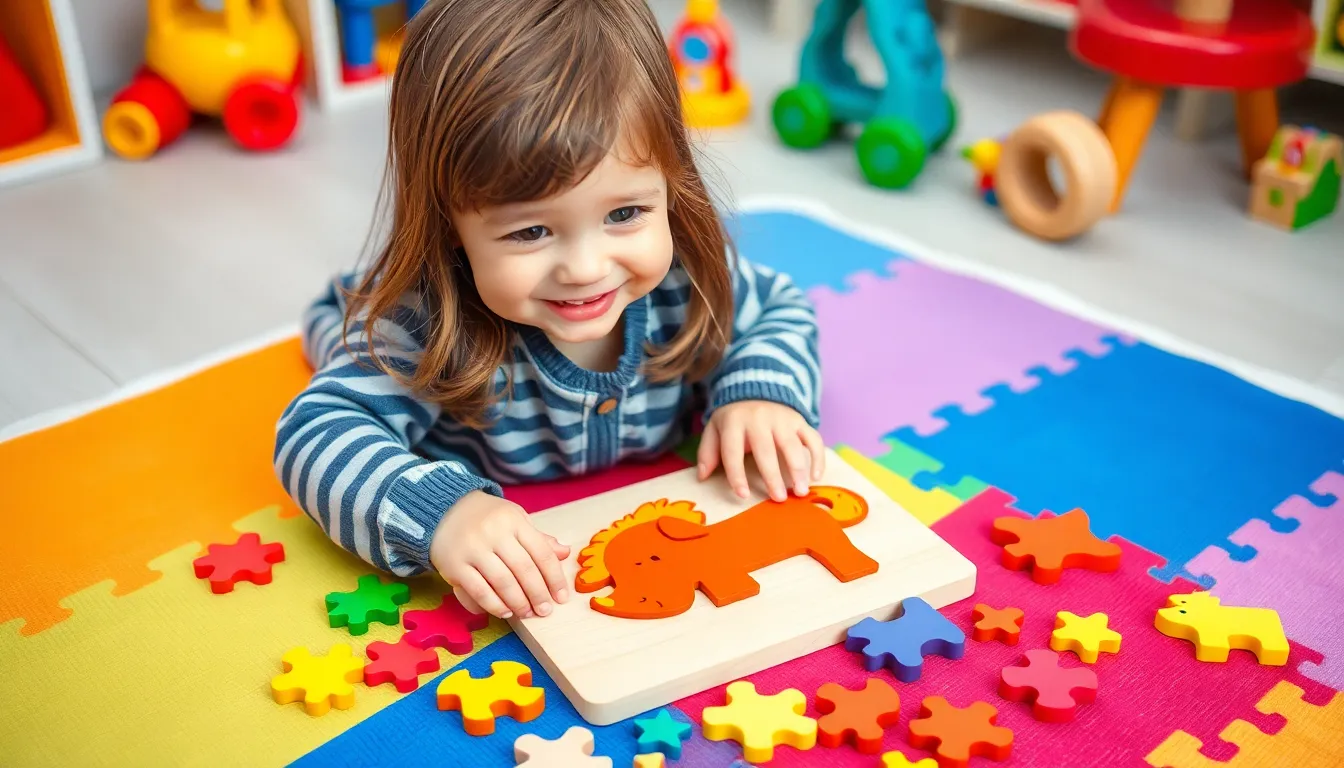
Puzzles for toddlers come in a variety of engaging formats. Each type serves as a tool for fun and learning.
Wooden Puzzles
Wooden puzzles feature sturdy pieces made from natural materials. These puzzles typically showcase vibrant colors and engaging shapes, attracting toddlers’ attention. Children benefit from the tactile experience of handling wooden pieces, enhancing grip strength and dexterity. Shapes and animals often dominate the designs, aiding vocabulary development. Many wooden puzzles include knobs for easy lifting, fostering independence as toddlers manipulate the pieces.
Jigsaw Puzzles
Jigsaw puzzles introduce another level of challenge for toddlers. These puzzles consist of interlocking pieces that fit together to form a complete image. Parents often find that smaller piece counts, such as four to eight, work best for young children. Familiar themes, like animals or vehicles, help toddlers recognize patterns and improve memory. As they connect pieces, toddlers develop problem-solving skills, gaining insight into spatial relationships. Jigsaw puzzles also encourage patience, as children learn to persist through trial and error.
How To Choose The Right Puzzle
Selecting the right puzzle for toddlers involves considering their age and ensuring safety standards are met.
Age Appropriateness
Age-appropriate puzzles feature different designs tailored to various developmental stages. For instance, puzzles aimed at toddlers aged 1 to 2 typically have larger pieces that are easier for small hands to grasp. As children grow, they can engage with puzzles that introduce more complexity, like those with interlocking pieces or multiple animals. Puzzles labeled for ages 3 and up often present challenges that encourage critical thinking and problem-solving skills. Assessing skill levels before purchasing guarantees a suitable fit, providing an enjoyable experience that supports cognitive growth.
Safety Considerations
Safety is crucial when choosing puzzles for toddlers. Ensure that puzzles are made from non-toxic materials that meet safety regulations. Puzzles without sharp edges prevent injuries during playtime, while sturdy construction enhances durability, preventing breakage that could present choking hazards. Additionally, avoid puzzles with small parts for younger toddlers, focusing instead on those designed specifically for their age group. Checking for certification labels from recognized safety organizations can give peace of mind while selecting the right puzzle. Prioritizing safety fosters a worry-free and engaging learning environment.
Tips For Encouraging Puzzle Play
Engaging toddlers in puzzle play involves creating an inviting atmosphere.
Creating A Fun Environment
A bright, clutter-free space encourages exploration and focus. Surrounding toddlers with vibrant puzzles captures their attention. Incorporating themes, like animals or vehicles, can spark interest. Offering a variety of puzzles presents new challenges and keeps them engaged. Adding soft seating or small tables promotes comfort, allowing them to puzzle at their own pace. Providing positive reinforcement during play fosters confidence. Making the area inviting with soft lighting and engaging background music can enhance the enjoyment.
Joining In On The Fun
Participating alongside toddlers deepens their engagement with puzzles. Demonstrating how to fit pieces together highlights the process. Asking open-ended questions promotes critical thinking about colors and shapes. Celebrating small successes boosts motivation and encourages further attempts. Sharing this experience strengthens bonds. Taking turns while working on larger puzzles cultivates patience and cooperation. By showing enthusiasm, caregivers ignite a passion for puzzle solving. Exploring each puzzle together transforms playtime into a shared adventure that encourages healthy learning.
Conclusion
Puzzles for toddlers are invaluable tools that blend fun with essential learning. They not only entertain but also nurture critical skills that support a child’s growth. By choosing the right puzzles and creating an engaging environment, caregivers can enhance a toddler’s development in various areas.
Encouraging puzzle play fosters patience and problem-solving abilities while strengthening bonds between caregivers and children. As toddlers explore and manipulate pieces, they embark on a journey of discovery that lays the foundation for future learning. Investing time in puzzle activities is a simple yet effective way to enrich a toddler’s playtime experience.

